7 Absolutely Horrible Head Infections
Horrible infections
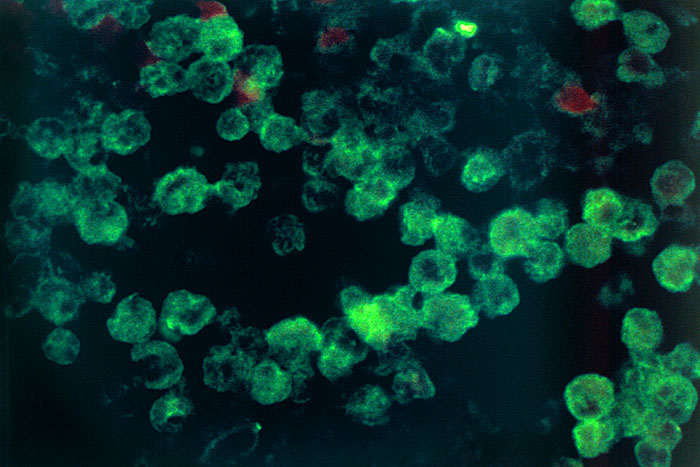
Recently, a college student in Korea reportedly went blind after leaving her contact lenses in her eyes around-the-clock for months. Amoebas infected her eyes, ate through her corneas and permanently damaged her retinas. And in recent summers, there have been a few deaths caused by Naegleria fowleri, known as the brain-eating amoeba — an infection picked up by swimming in lakes, rivers or hot springs.
These tragic medical cases got us thinking: What are the worst infections to get in your head? Here's a rundown of some of the most horrible head infections, grouped by type.
Amoebas

Most amoebas aren't killers, which is good news, because it's difficult to treat infections caused by these tiny microbes. An amoeba is a single-celled organism, and most species that infect people cause only mild stomach upset.
But in very rare cases (about 200 worldwide over the past 50 years), the bugs have traveled from the nose into the brain. That's the case for Naegleria fowleri, a freshwater amoeba. Most people get infected in the summer, by swimming in freshwater bodies, but in 2012, two cases were linked to nasal irrigation — rinsing the sinuses with tap water from a "neti" pot. (It's impossible to get the bug by simply drinking water, the CDC says.)
Until 2013, there was no cure for a Naegleria fowleri infection in the brain, but the CDC now provides an experimental drug, called miltefosine, that seems to kill the amoeba, at least in the laboratory. In 2013, a 12-year-old girl made a full recovery from the deadly infection when doctors combined miltefosine with therapeutic hypothermia (cooling the body).
Parasites
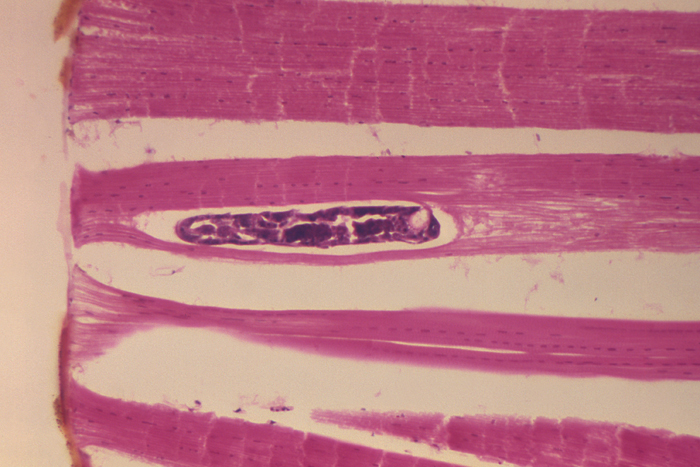
River blindness (onchocerciasis) is caused by a parasite that uses humans as hosts for its young. Blindness occurs because of the growth of the parasite's infective larvae inside the human body. River blindness occurs mainly in Africa, where the parasite is carried by black flies.
The nematode that causes river blindness, called Onchocerca volvulus, is a microscopic worm carried by the biting flies. After a fly bite, the worms spread through the skin, where they cause intense itching. Dead worms trigger a strong immune response that destroys nearby tissue, including the corneas. The inflammation causes the corneas to turn opaque and leaves the person blind.
Get the world’s most fascinating discoveries delivered straight to your inbox.
More than 17 million people in the world are infected with the tiny worms, the CDC estimates. River blindness can be treated with an oral drug that reduces the severity of the symptoms and helps prevent blindness.
Insect larvae
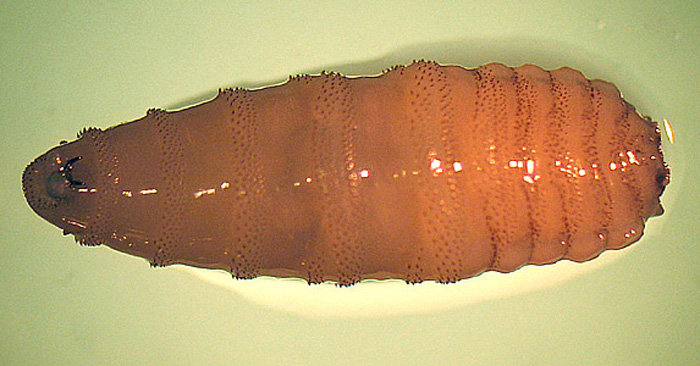
The screwworm fly will lay its eggs in any opening it can find, including the human ear. Infection with the larvae is a common travel disease, according to the CDC. The insect's Latin name is cochliomyia hominivorax, with hominivorax roughly translating to "eater of man."
These New World insects usually lay their eggs in wounds and mucous membranes of animals such as sheep, cows and horses, but they will also infect humans if given the chance. The larvae, when they emerge, are covered with bristly ridges that make them look like screws — all the better for burrowing through their host's flesh. They also have tiny tusks for tearing. The screwworm larva shown here was pulled from a traveler's ear.
Bacteria
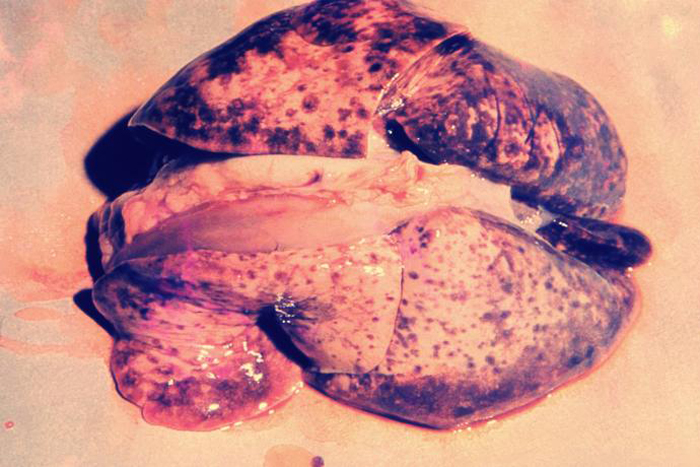
Meningitis is a bacterial infection that can knock down healthy people in their tracks. Many different kinds of infections cause meningitis — most are viral — but bacterial meningitis is particularly deadly. When bacteria invade the brain and its lining (a layer of tissue called the meninges), the swelling that results puts pressure on the brain, because the skull leaves it no room to expand. This can cause a person to become lethargic and confused, and can eventually put them into a coma.
But before that happens, one of the disease's distinguishing features is a stiff neck — you can't touch your chin to your chest — but not everyone has this symptom. Another meningitis symptom is a dark purple rash that doesn't disappear when pressed with a glass. That means the patient has blood poisoning, and needs to get to a hospital immediately. Sometimes, hemorrhaging patients start "crying blood" when the tiny vessels in their eyes burst. Antibiotics can treat bacterial meningitis, but an early diagnosis is important.
Fungus
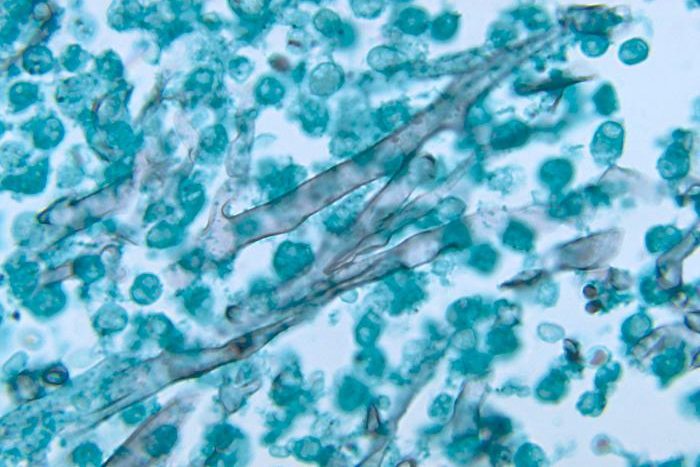
We're all covered with bacteria, viruses and fungi that help our body with its daily tasks. But sometimes, these fungi run amok and cause infection in the face.
This kind of infection, called rhinocerebral mucormycosis (because it attacks one's nose and brain), is caused by inhaling mold spores. It's most common in people with compromised immune systems, such as diabetics or organ transplant recipients. The disease causes incredible facial pain, double vision, bulging eyes and skin ulcers, and eventually your facial tissue dies and turns black. The fungus often invades the blood and brain, and even if all the infected tissue is scraped off and antifungal drugs are given, patients may still die. Luckily, this is a rare infection.
Prions
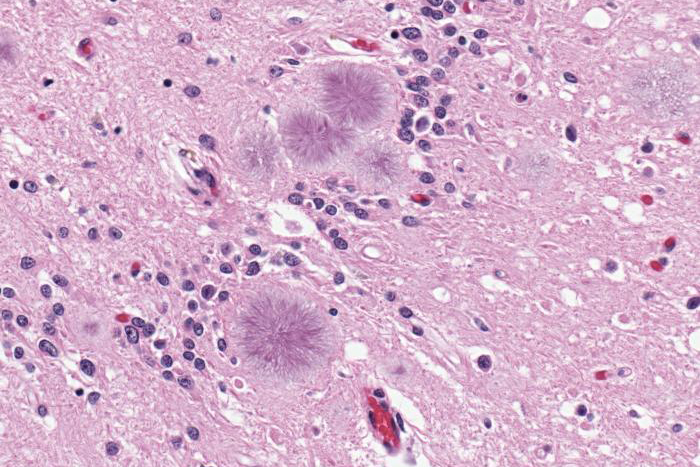
Mad-cow disease, also known as bovine spongiform encephalopathy, chews holes in a cow's brain until it resembles a kitchen sponge. The human form of the disease is called Creutzfeldt-Jakob disease. The illness is spread through the eating of infected meat.
Unlike every other infection on this list, prions aren't alive. Rather, they are wonky proteins that trigger a chain reaction, telling the body to make more copies of bad proteins. Clumps of misfolded proteins build up in the brain, where they are responsible for the "spongy" texture. All prion diseases are untreatable, and fatal.
Viruses
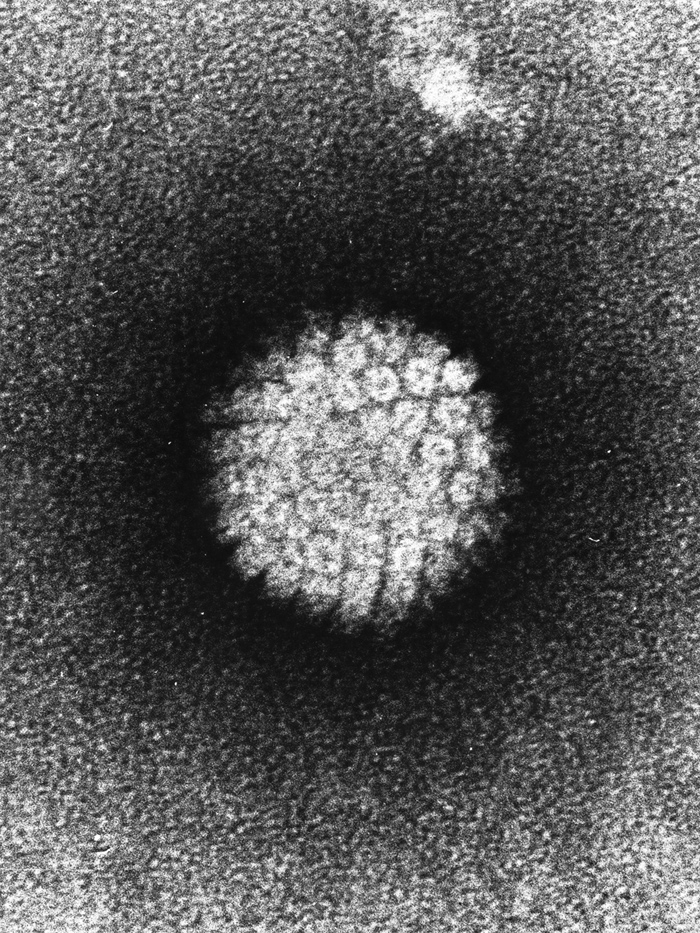
On their own, outside of a host, viruses don't amount to much. They're a tiny bundle of DNA or RNA bound inside a protective coat. To reproduce, viruses need to infect a living cell. In humans, there are many types of viruses that can infect various parts of the head. For example, encephalitis is brain swelling caused by viral infections. One virus, however, can cause throat cancer.
The human papillomavirus (HPV) causes cancer in the back of the throat and the base of the tongue and tonsils (oropharyngeal cancer). HPV is the most common sexually transmitted disease in the United States, and one strain, called HPV-16, is linked to oral cancer.
The CDC estimates that about 8,400 people are diagnosed with HPV-related oropharyngeal cancer in the United States each year. Both of the two HPV vaccines target the HPV-16 strain, though studies haven't yet shown if they are effective at preventing oral cancer.
Email Becky Oskin or follow her @beckyoskin. Follow us @livescience, Facebook & Google+.



